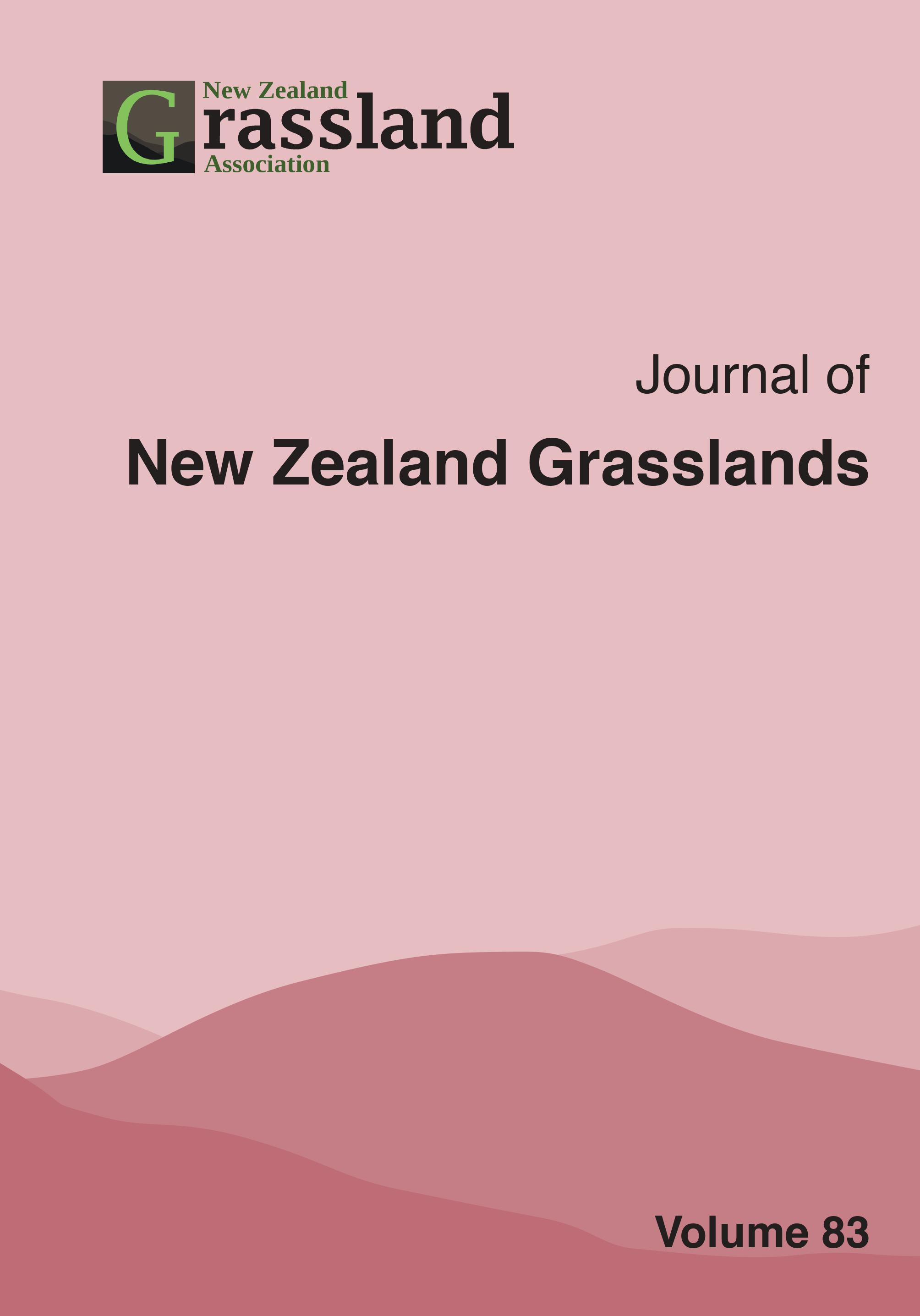The development of Pallaton Raphanobrassica for New Zealand farming systems
DOI:
https://doi.org/10.33584/jnzg.2021.83.3505Abstract
‘Pallaton’) is an allotetraploid, produced from kale
(Brassica oleracea L.) x radish (Raphanus raphanistrum
subsp. sativus L.). It is a multi-graze forage, selected for
high cumulative yield, water efficiency and resistance
to clubroot (Plasmodiophora brassicae). This paper
describes the breeding, agronomy and nutritive value
of ‘Pallaton’, which can be grazed in situ between
42 and 70 days after sowing (DAS) with no specific
crop maturity requirement. Cumulative yield of three
consecutive harvests, analysed by meta-analysis
of eighteen trials from 2013 to 2019 on three sites,
showed ‘Pallaton’ had a greater yield of 16,254 kg DM/
ha than forage rape (B. napus spp. biennis, cv. ‘Titan’)
and leafy turnip (B. rapa; syn. B. campestris cv. ‘Pasja
II’) at 12,639 and 10,965 kg DM/ha, respectively. A
further trial, comparing nutritive values, demonstrated
‘Pallaton’ has a similar profile to ‘Titan’. ‘Pallaton’ may
be rotationally grazed for up to twelve months when
initially grazed by livestock at 350 - 400 mm plant
height between 42 and 70 DAS. Livestock consuming
‘Pallaton’ are susceptible to the same potential animal
health concerns as other Brassica species, but represents
a forage option for sheep, beef, deer and dairy farming,
particularly those in challenging environments.
Downloads
Downloads
Published
How to Cite
License

This work is licensed under a Creative Commons Attribution-ShareAlike 4.0 International License.
Copyright
This work is licensed under a Creative Commons Attribution-Non Commercial-NoDerivatives 4.0 International License. Rights granted to the New Zealand Grassland Association through this agreement are non-exclusive. You are free to publish the work(s) elsewhere and no ownership is assumed by the NZGA when storing or curating an electronic version of the work(s). The author(s) will receive no monetary return from the Association for the use of material contained in the manuscript. If I am one of several co-authors, I hereby confirm that I am authorized by my co-authors to grant this Licence as their agent on their behalf. For the avoidance of doubt, this includes the rights to supply the article in electronic and online forms and systems.




